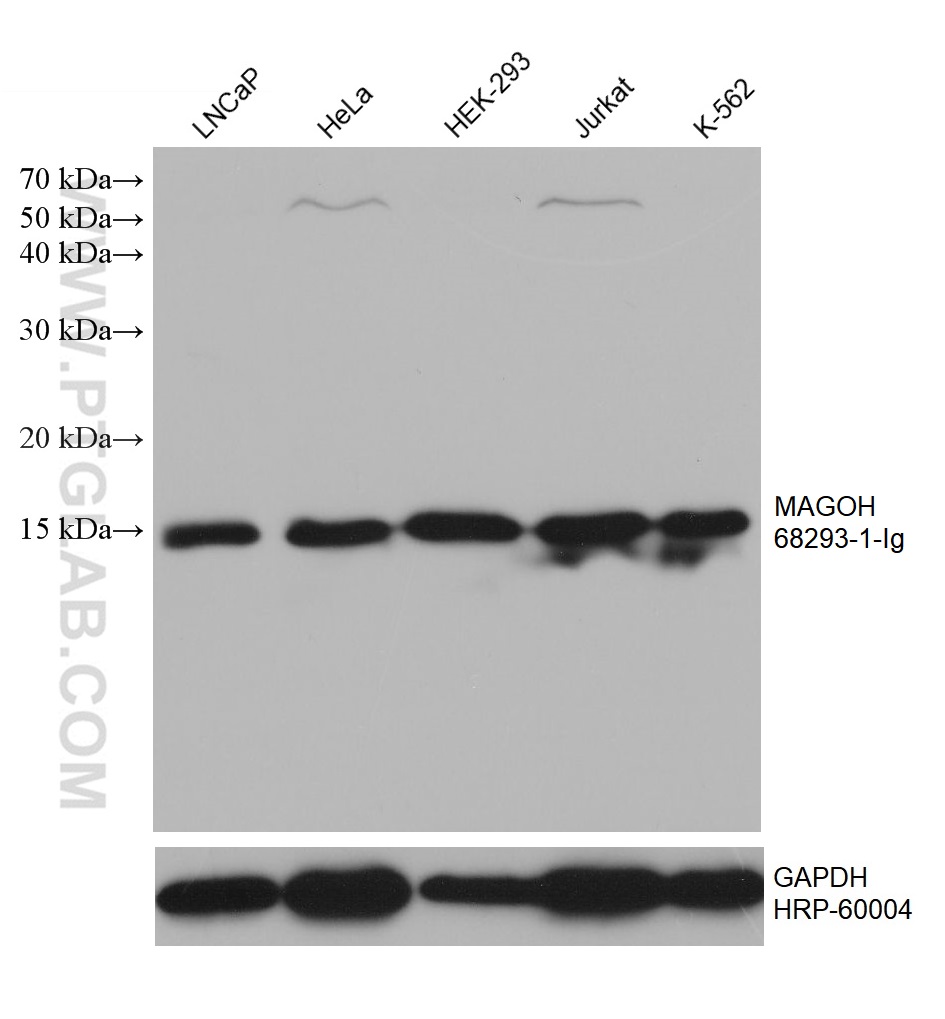验证数据展示
产品信息
68293-1-PBS targets MAGOH in WB, Indirect ELISA applications and shows reactivity with Human, MOUSE, RAT, RABBIT samples.
| 经测试应用 | WB, Indirect ELISA Application Description |
| 经测试反应性 | Human, MOUSE, RAT, RABBIT |
| 免疫原 | MAGOH fusion protein Ag3004 种属同源性预测 |
| 宿主/亚型 | Mouse / IgG1 |
| 抗体类别 | Monoclonal |
| 产品类型 | Antibody |
| 全称 | mago-nashi homolog, proliferation-associated (Drosophila) |
| 别名 | MAGOH, MAGOHA, Protein mago nashi homolog |
| 计算分子量 | 146 aa, 17 kDa |
| 观测分子量 | 17 kDa |
| GenBank蛋白编号 | BC018211 |
| 基因名称 | MAGOH |
| Gene ID (NCBI) | 4116 |
| 偶联类型 | Unconjugated |
| 形式 | Liquid |
| 纯化方式 | Protein G purification |
| UNIPROT ID | P61326 |
| 储存缓冲液 | PBS only , pH 7.3 |
| 储存条件 | Store at -80°C. The product is shipped with ice packs. Upon receipt, store it immediately at -80°C |
背景介绍
MAGOH, belonging to the mago nashi family, is a component of a splicing-dependent multiprotein exon junction complex (EJC) deposited at splice junction on mRNAs. The EJC is a dynamic structure consisting of a few core proteins and several more peripheral nuclear and cytoplasmic associated factors that join the complex only transiently either during EJC assembly or during subsequent mRNA metabolism. Core components of the EJC functions to mark the position of the exon-exon junction in the mature mRNA and thereby influences downstream processes of gene expression including mRNA splicing, nuclear mRNA export, subcellular mRNA localization, translation efficiency and nonsense-mediated mRNA decay (NMD). MAGOH regulates the transcriptional activation of STAT3 by interfering complex formation between STAT3 and a core EJC component Y14.
